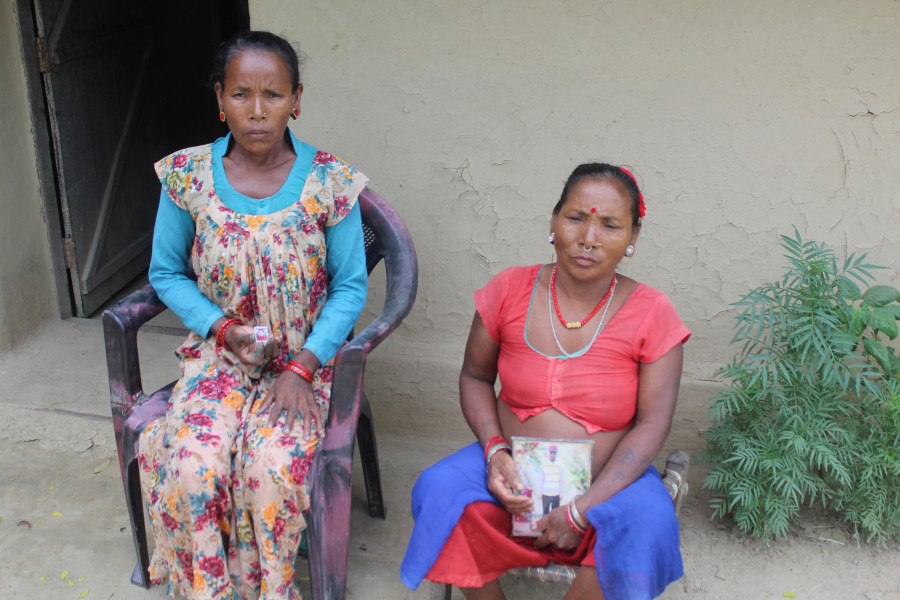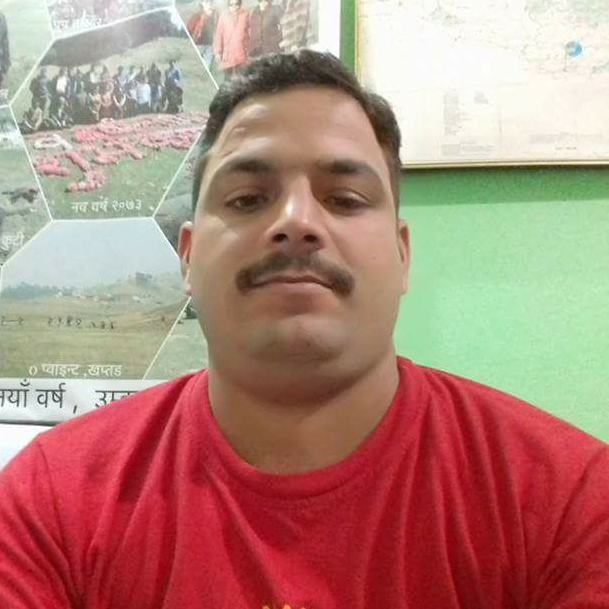Sudurpaschim Province
On the International Day of the Disappeared, one family in Kanchanpur talks about the misery of being torn apart
According to the data available at the district administration office, 53 people have disappeared in the district over the decade-long insurgency period.
Bhawani Bhatta
The decade-long armed insurgency that began in 1996 came to an end when the rebel CPN (Maoist) entered mainstream politics in 2006, almost 13 years ago. But for Astani Chaudhary of Pipaladi, Kanchanpur, the insurgency that tore his life apart feels like it happened yesterday. “The insurgency period still haunts me; all the lives lost, families torn apart,” said Astani, a mother of four daughters.
Astani’s house is next to a busy thoroughfare in Pipaladi and she can usually be found seen sitting outside with her eyes on the road. Every time she sees an adolescent approaching her house, her heart skips a beat. “I see my daughter, Madhu, in every young girl I see. It has been 17 years since her disappearance, but I still hope for her return,” said Astani.
It was the dawn of September 12, 2002, when a joint security force raided Astani’s house. Madhu, and her cousins Sundar and Prakash, were still asleep inside the house when security forces, according to Astani, had detained the trio for their alleged affiliation with the Maoists.
“We heard that security personnel had paraded them around the village and then took them to the Area Police Office in Jhalari at around 10 am. We had gone to the post to inquire about them but the police denied having them in their custody. We don’t know where the security personnel took them and what they did with them,” said Astani.
Madhu was the eldest daughter among Astani’s four children. She was a grade six student. Sundar’s elder brother Narendra was an active member of the Maoist party at that time and his older brother, Kalang, had also been detained by the police for the same charge. He was released after 17 months. “The security personnel did not only arrest my son but would frequently raid my house. I lost my family as one son was with the Maoist, another was in prison while the third was taken by the army,” said Sitamati Chaudhary, Sundar’s mother.
Because of the torture inflicted on her family by the security personnel, Sitamati left her village. “My two sons later returned home, but Sundar never came back. I don’t know whether he is still alive or dead,” she said. Her eldest son Narendra was elected as ward chairman during the local elections held in 2017 and he tried his best to find the whereabouts of the trio that had gone missing 13 years ago but hasn’t been successful. “The villagers used to blame me for the disappearance of my brothers and sister. It all happened because of me, they said,” he added.
The two families aren’t the only ones who were torn apart during the insurgency period. Many families in Kanchanpur had “disappeared” in the war between the security forces and Maoists.
Sanam Chaudhary of Baluwaphant, in Krishnapur, does not remember his father’s face. He was just 11 when security personnel had detained his father, Taranath Chaudhary, in 2001. A police team from the Area Police Office in Krishnapur had arrested him and he never returned. “I was at school when my father was arrested. I didn’t even say goodbye to him. We know nothing about him,” said Sanam.
According to the data available at the district administration office, 53 people had “disappeared” in Kanchanpur district, but the number is not exact, as different human rights organisations have different records of the disappeared people.
“We don’t have the exact number of “forced disappearances” that happened 13 years ago. We are working to find out the exact figure,” said Dharma Chaudhary, the district chairman of Conflict Victims’ Society for Justice. According to him, 98 complaints have been registered at the Commission for the Investigation of Enforced Disappeared Persons.




 10.12°C Kathmandu
10.12°C Kathmandu












